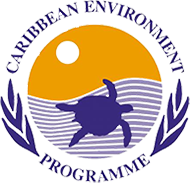
This year’s World Toilet Day slogan “Making the Invisible Visible” poses an invitation to reflect upon the impact of sanitation on groundwater, and ultimately the linkage between groundwater and marine ecosystems.
You may wonder if pollution of groundwater is relevant to the sea, especially when we consider that groundwater moves slowly to the coasts. While land-based sources of marine pollution have been more widely studied, relatively little is known about the interaction between submarine groundwater discharge (SGD) and nearshore marine ecosystems. Some studies point out that SGD is a significant source of nutrients to the sea that can be beneficial for activities such as aquaculture[1].
However, the concern about SGD being also a source of marine pollution has recently been more documented. In areas where the nutrient concentration of coastal groundwater has been increased by anthropogenic activities, nutrient loading to coastal waters via SGD has been associated with macroalgal blooms and shifts in the composition of biological communities[1] harmful algal (phytoplankton) blooms[2], and eutrophication[3] in coastal ecosystems worldwide. Other studies document SGD as a potential source of heavy metals[4], and contaminants of emerging concern.[5]
The discharge of untreated or partially treated domestic wastewater is one of the key causes of groundwater pollution. When septic tanks are not properly designed, located, installed, or maintained, they might leak wastewater containing bacteria and contaminants into the groundwater. Poorly designed, aged, and inefficient sewerage systems are an additional source of groundwater pollution. The consequences for human health are quite distressing too, wastewater contamination in groundwater can cause hepatitis and dysentery[1].
The mission of the GEF CReW+ project is to implement integrated water and wastewater solutions for a clean and healthy Caribbean Sea. We strive to support countries in prioritizing sanitation by updating their legal frameworks and public policies, finding innovative financial mechanisms for sanitation, designing, and building solutions for wastewater treatment, and raising awareness and building capacities.
Under the Cartagena Convention’s Protocol Concerning Pollution from Land-Based Sources and Activities (LBS), governments in the Wider Caribbean commit to ensuring that surface and groundwaters are not contaminated by sewage or wastewater.
Understanding the invisible link between groundwater and the marine ecosystems is crucial in the quest to address holistically the challenges pertaining to wastewater management. Having adequate and accessible toilets for all are just the first element in the chain of results that need to occur to start addressing this global issue.
###
The GEF CReW+ is a partnership project funded by the Global Environment Facility (GEF) that is being co-implemented by the Inter-American Development Bank (IDB) and the United Nations Environment Programme (UNEP) in 18 countries of the Wider Caribbean Region (WCR). This project builds upon its previous successful phase “The Caribbean Regional Fund for Wastewater Management (CReW)” project (2011-2017). CReW+ is being executed by the Deutsche Gesellschaft für Internationale Zusammenarbeit (GIZ) GmbH, the Organisation of the American States (OAS) and the Secretariat of the Cartagena Convention on behalf of the IDB and UNEP, respectively.
The Global Environment Facility has provided more than $22 billion in grants and blended finance and mobilized an additional $120 billion in co-financing for more than 5,200 projects and programs. The GEF is the largest multilateral trust fund focused on enabling developing countries to invest in nature and supports the implementation of major international environmental conventions including on biodiversity, climate change, chemicals, and desertification. It brings together 184 member governments in addition to civil society, international organizations, and private sector partners.

[1] Massachusetts Department of Environmental Protection. “Groundwater, Frequently Asked Questions”. https://tinyurl.com/bdezhpmk
[1] Naim O. Seasonal responses of a fringing reef community to eutrophication (Reunion Island, Western Indian Ocean). Mar Ecol Prog Ser. 1993; 99:137–51; Costa JOS, Nimmo M, Attrill MJ. Coastal nutrification in Brazil: A review of the role of nutrient excess on coral reef demise. J South Am Earth Sci. 2008; 25(2):257–70; McCook LJ. Macroalgae, nutrients and phase shifts on coral reefs: Scientific issues and management consequences for the Great Barrier Reef. Coral Reefs. 1999; 18(4):357–67; Lyons DA, Arvanitidis C, Blight AJ, Chatzinikolaou E, Guy‐Haim T, Kotta J, et al. Macroalgal blooms alter community structure and primary productivity in marine ecosystems. Glob Change Biol. 2014; 20:2712–24.
[2] Lee Y-W, Kim G. Linking groundwater-borne nutrients and dinoflagellate red-tide outbreaks in the southern sea of Korea using a Ra tracer. Estuar Coast Shelf Sci. 2007; 71(1–2):309–17; LaRoche J, Nuzzi R, Waters R, Wyman K, Falkowski P, Wallace D. Brown tide blooms in Long Island’s coastal waters linked to interannual variability in groundwater flow. Glob Change Biol. 1997; 3(5):397–410; Paerl HW, Otten TG. Harmful cyanobacterial blooms: causes, consequences, and controls. Microb Ecol. 2013; 54(4):995–1010.
[3] González FUT, Herrera-Silveira JA, Aguirre-Macedo ML. Water quality variability and eutrophic trends in karstic tropical coastal lagoons of the Yucatán Peninsula. Estuar Coast Shelf Sci. 2008; 76(2):418–30; Lapointe BE, Clark MW. Nutrient inputs from the watershed and coastal eutrophication in the Florida Keys. Estuaries. 1992; 15(4):465–76.
[4] Manhua Luo et al. “Pollution assessment and sources of dissolved heavy metals in coastal water of a highly urbanized coastal area: The role of groundwater discharge”. 2022. https://tinyurl.com/3jmh9dju
[5] Tristan McKenzie, Ceylena Holloway, Henrietta Dulai, James P. Tucker, Ryo Sugimoto, Toshimi Nakajima, Kana Harada, Isaac R. Santos. Submarine groundwater discharge: A previously undocumented source of contaminants of emerging concern to the coastal ocean (Sydney, Australia), Marine Pollution Bulletin, Volume 160, 2020, 111519, ISSN 0025-326X, https://doi.org/10.1016/j.marpolbul.2020.111519.
[1] Jianan Liu. “Submarine groundwater discharge impacts on marine aquaculture: A mini review and perspective” 2022. https://tinyurl.com/377bjhpv






